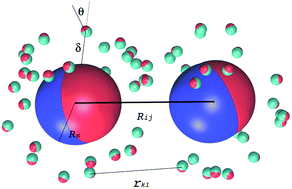A magnetosome chain viewed as a bio-elastic magnet
Abstract
In light of the coarse-grained Monte Carlo numerical simulation method, the magnetosome chain stability of magnetotactic bacteria is analysed and discussed. This discrete chain of magnetic nanoparticles, encapsulated in a lipid membrane and flanked by filaments, orients bacteria in the geomagnetic field as a compass needle. Each magnetosome is a magnetite or greigite nanocrystal encapsulated in a soft lipid shell. This structure is modelled by a hard core with a magnetic dipole embedded and a cloud of electric dipoles which are able to move and rotate over the magnetic spherical core. In the present paper, some of the many possibilities of the model by varying the control parameters of the system are explored. Magnetic particles arrange in long linear clusters when the coating is removed. However, linear but twisted chains of magnetic particles emerge when there are electric dipoles in the coating shell. A unique linear and straight chain is not observed in any 3D numerical simulation; this result is in agreement with a real living system of bacteria in a geomagnetic field when proteins that form the filament are absent. Finally, the stability and magnetization of a magnetosome chain of 30 beads in one dimension set up are discussed resembling a real chain. The results suggest that a magnetosome chain not only orients bacteria but also should be considered as a potential storage of elastic energy.


 Please wait while we load your content...
Please wait while we load your content...